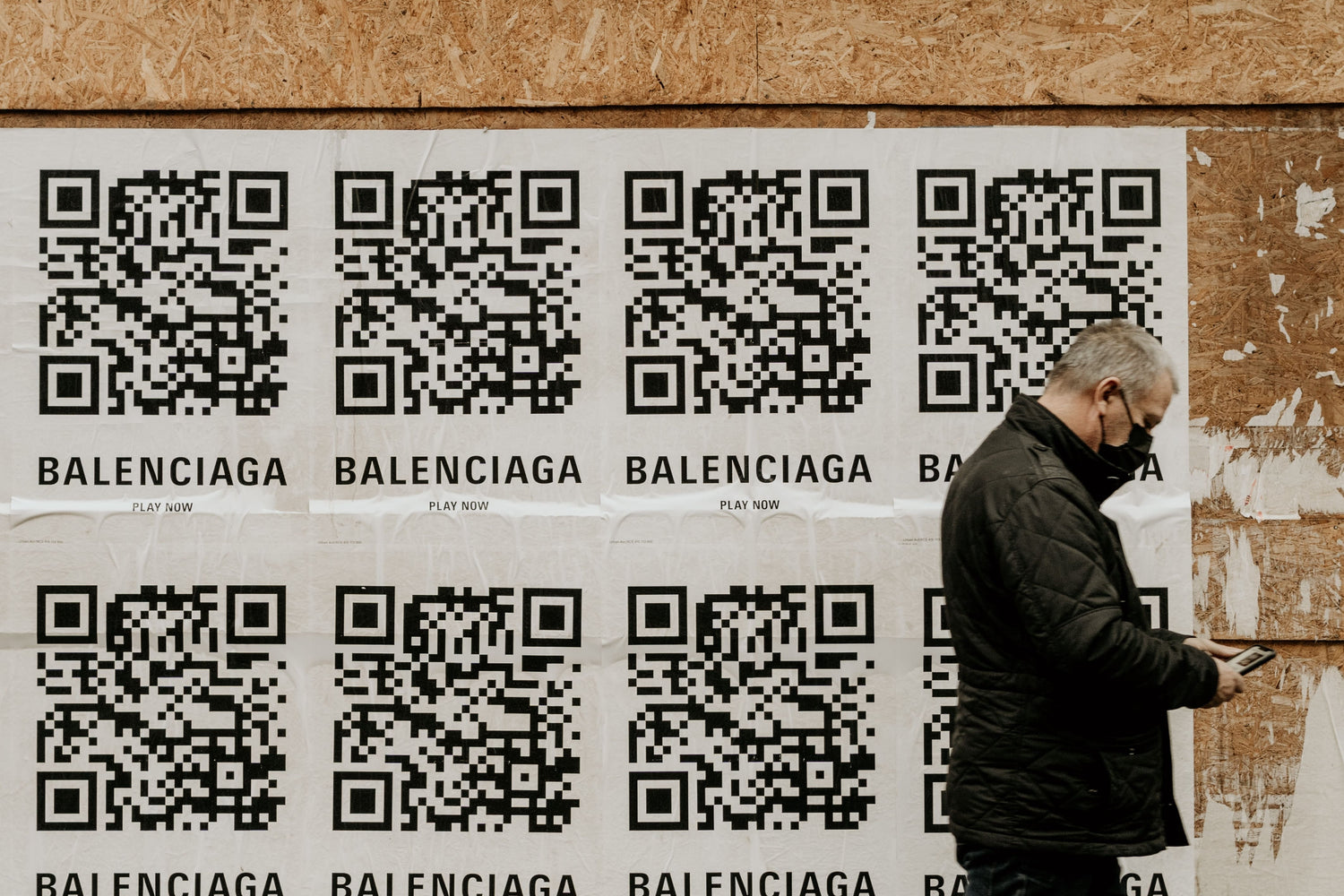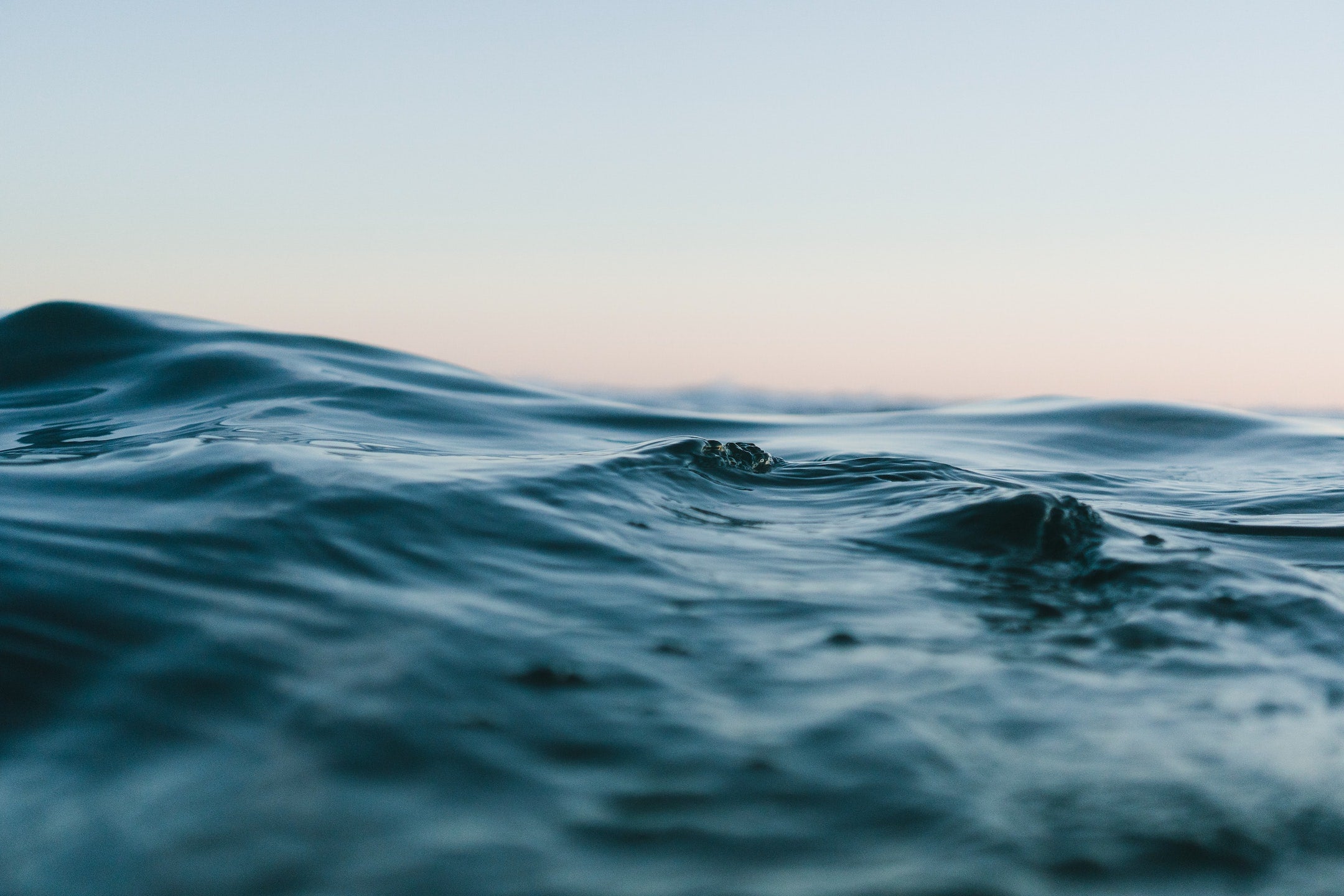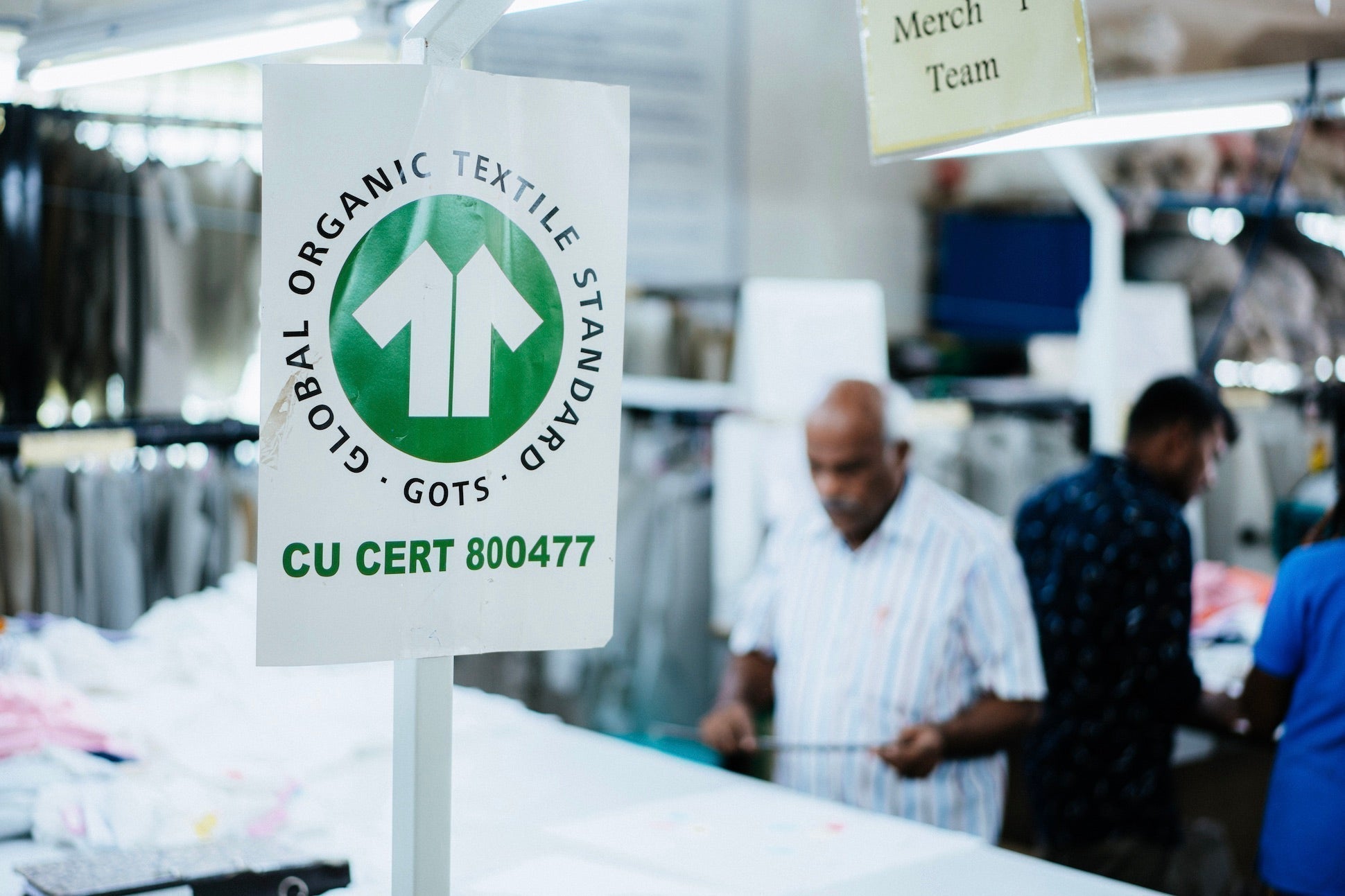While others failed, QR codes became all the rage during the pandemic. Short for Quick Response (QR), these square-shaped pixels have allowed us to access all kinds of information stored online.
They became a fashion hit during the Levi’s x Ganni collaboration. Together the two created an exclusive, upcycled, capsule collection that used QR codes to tell the stories of the clothes. Wearers could see an item’s history and even details about prior renters.
But that was in 2020. They’re hardly the only ones now.
In this post, we highlight some of the standout brands using this simple, powerful, and persistent piece of technology.
Supporting the sustainable mission
In the ever-evolving world of fashion, QR codes are quickly becoming a must-do for sustainability-savvy brands. Black and white has always been a classic pairing, but where digital codes are concerned, they’re often the key to helping shoppers make more informed decisions.
We identify some of the brands using QR codes to help achieve their pro-planet mission.
POMP
• Makes: organic cotton clothing
• Price: £
• Delivery: Worldwide (mostly)
Chances are if you’re reading this post, you probably know something about us already. POMP, that’s us - your go-to brand for affordable, quality, organic cotton clothing. Our timeless designs make us ideal for your everyday wardrobe.
But beyond that, did you know about our QR codes? We’re big supporters of circular economies, so we’ve implemented an initiative of our own to give your POMP pieces another life. Forget the landfills and incinerators. If you scan the QR code on the care label, you’ll find instructions that tell you how to send your items back to us for proper recycling. We’ll use them as raw materials for the Recycled Range!
The best part (for you) is you’ll get a shopping voucher in return.
Another Tomorrow
• Makes: modern sustainable luxury
• Price: £££
• Delivery: Worldwide
Another Tomorrow is a NYC-based brand that focuses on luxe sustainable fashion. It’s only natural that one of their guiding business principles is transparency.
Like POMP, their QR codes make their appearance on the inner tag. But unlike POMP, scanning them takes you to a dedicated page of that garment’s provenance - from farm to factory and beyond. Tech courtesy of Digimarc, previously known as EVRYTHNG.
The journey is impressively well-detailed. You will come to know the farm of the sheep that provided the wool, the manufacturer that put the garment together, every mode of transportation used, and much more. They also link to a resale service - just in case you think you’ve had enough of the item.
Reformation
• Makes: sustainable women’s clothing and accessories
• Price: ££
• Delivery: Worldwide
Most people know Reformation for two reasons. First, their dresses. Flattering every figure that wears them, they became a special occasion hit amongst Millennials. Second, their viral campaign, “Being naked is the #1 most sustainable option. We’re #2.”
They introduced QR codes when launching their partnership with FibreTrace, a tech company that allows brands to trace their supply chains. With a quick scan, shoppers could see the lifecycle of their denim jeans, which are made with fibres from Good Earth Cotton at the world’s first climate-positive farm in Australia.
The move made them the first brand to adopt FibreTrace in the US.
Patagonia
• Makes: outdoor clothing and accessories
• Price: ££
• Delivery: Select countries worldwide
And then there’s Patagonia.
One of the vanguards of sustainability in the clothing industry. It’s a well-earned reputation, what with establishing Regenerative Organic Certified® and the Earth Tax (aka 1% For the Planet). And an owner who decided his shares had a higher calling than making him even richer.
In 2020, Patagonia decided it was time to revamp its hang tags, which provided lengthy details about a garment. They replaced their multi-card versions with ones featuring QR codes - and algae-based ink. It was reported that the old way of doing things meant the need to produce 20 different designs and more than 400 different inserts.
That’s all gone since their Spring 2023 line came out. In terms of what it means for the environment, this simple change in hang tags alone has allowed the brand to cut back on paper consumption by more than 100,000 pounds a year.
 Source: Retail TouchPoints
Source: Retail TouchPoints
Gabriela Hearst
• Makes: modern sustainable luxury
• Price: £££
• Delivery: Worldwide
Despite holding the coveted Creative Director position at Chloé, Gabriela Hearst left to focus on her eponymous label. Just as luxurious as her former employer, the Gabriela Hearst brand offers sustainable luxury - much like Another Tomorrow - for men and women.
Almost four years ago, their Spring/Summer 2020 Collection became the starting point for digital identities and garment journeys. The tech provider in this case? EON, who do essentially the same as Digimarc does for Another Tomorrow.
Gabriela Hearst uses QR codes to share as much information as possible with customers, improving product transparency. It provides a glimpse of what really went on behind the scenes. Was the blouse made from eco-friendly hemp? What was the mill that wove the fabric? Is the factory that put the final piece together one that operates ethically?
Samsøe Samsøe
• Makes: modern fashion rooted in Scandinavian simplicity
• Price: ££
• Delivery: Select EU countries
Samsøe Samsøe is a classic when it comes to Copenhagen street style blended with Scandinavian simplicity. That, and it's got sustainability woven into its DNA.
In May 2022, they upped their eco-game. To cut their contribution to textile waste and extend the average life of clothing, they added QR codes to the inner brand label for a smooth sail into their resell service. Folk are guided effortlessly to the Facebook or Instagram marketplace, unravelling the resale process complexities. The coolest part? Because the QR code has a garment’s story embedded in it, to begin with, the resale announcement is created automatically.
Now that is what you call simplification.
QR codes and creative persuasion
The benefits of this nifty piece of tech aren't limited to transparency of supply chains and sustainability, of course. It’s just as effective for branding and marketing.
Adidas and Spotify struck a chord with sneaker enthusiasts in 2019 through the Pulseboost HD launch. With QR codes, they seamlessly integrated music and footwear. Those scanning the codes on the Pulseboost HD sneaker gained access to exclusive Spotify playlists, forging a dynamic fusion of sport and sound.
And if we’re to mention a true pioneer, we have to pay homage to Calvin Klein. Back in 2010, QR codes were still finding their footing. The brand was already known for its black-and-white campaigns featuring scantily clad models. But they skipped that, and instead boldly combined larger-than-life ads and QR codes. If you scanned them, the season’s campaign video would start to play on the screen of your smartphone.
 Source: Contra Vision
Source: Contra Vision
And there you have it. Our spotlight on the myriad ways fashion brands are innovating with the help of QR codes. One thing that’s clear is a strong drift towards leveraging technology to achieve increased sustainability.
If you want to know more about the other sustainability initiatives we’ve got going on at POMP, read all about them over here.


 The ShowYourStripes range was made using POMP clothing previously sent back to us.
The ShowYourStripes range was made using POMP clothing previously sent back to us.

